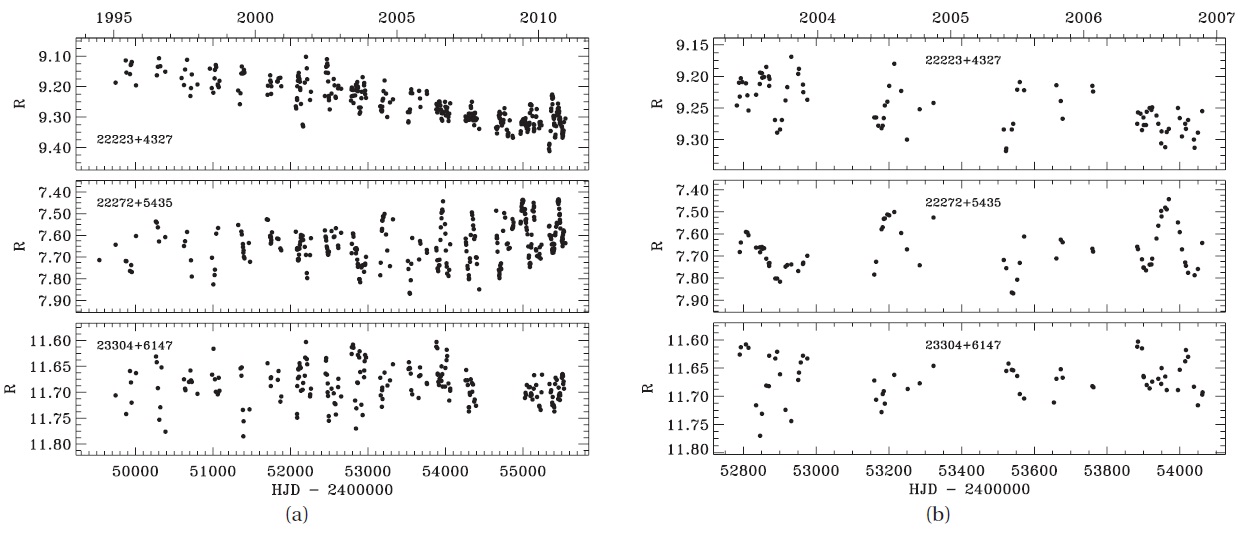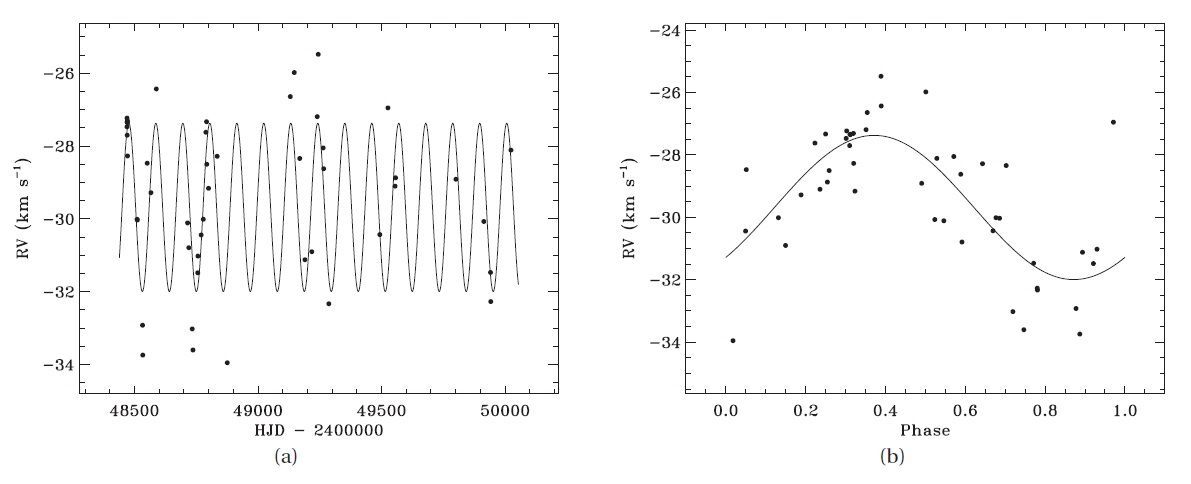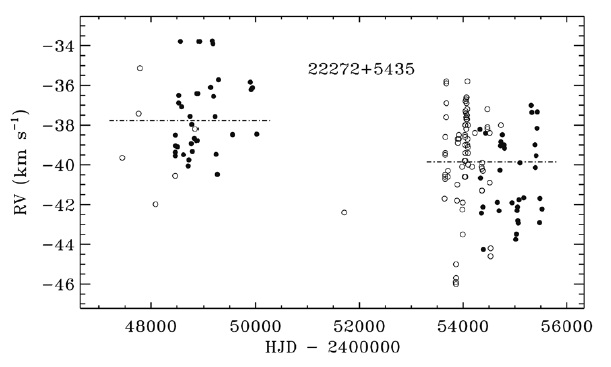



Binary companions are often invoked to explain the axial and point symmetry seen in the majority of planetary nebulae and proto-planetary nebulae (PPNs). To explore this hypothesis, we have undertaken a long-term (20 year) study of light and velocity variations in PPNs. From the photometric study of 24 PPNs, we find that all vary in brightness, and from a subset of 12 carbon-rich PPNs of F-G spectral type we find periods of 35-155 days, with the cooler having the longer pe-riods. The variations are seen to be due to pulsation; no photometric evidence for binarity is seen. A radial velocity study of a sub-sample of seven of the brightest of these shows that they all vary with the pulsation periods. Only one shows evidence of a longer-term variation that we tentatively identify as being due to a binary companion. We conclude that the present evidence for the binary nature of these PPNs is meager and that any undetected companions of these PPNs must be of low mass (< 0.25 M⊙ ) or long period (> 30 years).
The search for binary companions to post-asymptotic giant branch (post-AGB) stars is largely motivated by a desire to better understand the processes that shape the nebulae surrounding these objects. Planetary nebulae (PNs) display nebulae that are classified as round, ellipti-cal, or butterfly based on their appearances. They com-monly show an axial or point symmetry. This is not what one would have initially expected for the shape of these nebulae, since they originate in the mass lost by spherical AGB stars. To better understand how this change occurs from spherical mass loss by an AGB star to the axial- and point-symmetric nebula seen in a PN, we are studying proto-PNs (PPNs). These are objects in transition be-tween the AGB and PN phases in the evolution of inter-mediate-and low-mass stars. They possess detached, expanding gaseous and dusty envelopes that radiate in the mid-infrared (Kwok 1993), and most were initially indentified as a result of the Infrared Astronomical Satel-lite (IRAS). The central stars are expected to change spec-tral type from G to B supergiants in a timescale of a few thousand years as the stars evolve horizontally at con-stant luminosity across the Hertzsprung-Russell diagram(Bloecker 1995). Hubble Space Telescope images have re-solved these small nebulae and show that PPNs already possess the basic shapes found in PNs (Ueta et al. 2000, Sahai et al. 2007, Siodmiak et al. 2008). Many are bipolar and some show an obscured equatorial region. How are the nebulae shaped?
1.2 Mechanisms to Shape the Nebulae
Three general mechanisms have been proposed to shape the nebulae from spherical to axial symmetry. They are as follows:
1)
2)
3)
While the first of these explicitly requires a binary com-panion, recent studies indicate that a binary companion is also needed to sustain the shaping mechanism in the other two cases.
Thus the hypothesis of a binary companion is the fa-vored explanation for the shaping of the nebulae (De Marco 2009). In this study, our goal is to observationally investigate this binary hypothesis.
2. DETECTING BINARIES BY PHOTOMETRIC VARIATIONS
There are several means by which binaries can be de-tected photometrically. 1) Eclipses are possible but un-likely unless the orbital period is very short. 2) A hot com-panion can irradiate the facing hemisphere of the PPN, producing a light variation with a period equal to the or-bital period. 3) A companion can tidally-distort the shape of the PPN, producing an ellipsoidal light variation with
a period equal to half that of the orbital period. These are the methods used by Bond (2000), Miszalski et al. (2009), and others to identify binary companions to central stars of PNs (CSPNs). This has resulted in the detection of about 40 binary CSPNs; these have periods of about 1-8 days and statistics indicate that about 10-20% of PNs pos-sess close binaries. 4) Periodic obscuration by circumbi-nary dust has also been observed in a few binaries of lon-ger period orbits. These included some post-AGB objects like the "Red Rectangle."
To search for these, we have been carrying out a pho-tometric monitoring program of PPNs at the Valparaiso University Observatory, beginning in 1994 and continu-ing to the present time. The program includes about 24 PPNs with apparent magnitudes ranging from 7 to 14. The observations are carried out primarily by undergrad-uate students, using the 0.4-m telescope and charge-cou-pled device camera at the campus observatory. This is a unique study; only one other group has been carrying out light curve studies of PPNs, and they have been observing a smaller sample with a smaller temporal baseline (Arkhi-pova et al. 2000).
In Fig. 1, we show examples of the light curves of three PPNs from 1994 through 2010 (a), and we show on an ex-panded scale the cyclical variations seen in a typical four-year interval (b). Period analyses show a dominant period for each of the cooler PPNs of spectral type F-G, with periods ranging from 35 to 155 days. For hotter B types, the light curves vary with still shorter timescales and ap-pear to have multiple periods. The brightnesses vary in a range from 0.15 to 0.6 mag. In a study of a sample of 12 carbon-rich PPNs, we find a clear trend of shorter period and smaller amplitude with higher effective temperature (Hrivnak et al. 2010). The light curves show secondary pe-riods often producing a beat pattern and clearly indicate that the light variations are due to pulsation and not bi-nary effects.
One can still consider what constraints are set by this absence of observed binary photometric effects. What would one expect to see if there was a binary compan-ion? We explored this by producing simulated binary light curves using the light curve synthesis program
tion inward by the companion as the PPN evolved.
3. DETECTING BINARIES BY RADIAL VELOCITY VARIATIONS
Radial velocity monitoring holds better promise for detecting binaries with a range of periods from one to several tens of years. Referring to the previous example, a PPN with a mass of 0.62 M⊙ , a companion of 0.5 M⊙ , and an orbital period of 1 year would produce a velocity varia-tion of 13 km s-1 if viewed in the orbital plane. This would be reduced by the sine of the inclination for other view-ing angles, but this only amounts to a factor of 0.5 for an inclination of 30?. Even with an orbital period of 11 years, the velocity amplitude is 6.3 km s-1 and with a period of 30 years, the amplitude is 4.5 km s-1, values that one can hope to detect. However, detectability also depends on the amplitude of the intrinsic pulsation.
We have been carrying out a program to search for binary velocity variations among a sample of the seven brightest PPNs with F-G spectral type. These have many sharp metallic lines and constitute a much more favor-able sample to search for velocity variations than do the hot CSPNs with their fewer and broader lines. Our ob-servations are being carried out with the Coude spectro-graph at the 1.2-m telescope at the Dominion Astrophysi-cal Observatory (DAO), Victoria, Canada. An initial study was carried out from 1991 to 1995, in which we detected pulsational variations of ~10 km s-1 peak to peak, with pe-riods similar to those derived from the light curve moni-toring. An example is shown in Fig. 2.
Observations were re-initiated in 2007 and are con-tinuing in our search to detect binaries. We presently have 40-100 observations of each of these PPNs, with a precision of ~0.6 km s-1. However, only in one case, IRAS 22272+5435, has evidence been found for velocity change beyond pulsation. This is shown in Fig. 3 where we have also included some available observations by others (pri-marily Z?cs et al. 2009). A systematic difference of 2.6 km s-1 is seen between the early (1989-1995) and later (2005-2010) observations. If we assume that these variations are due to a long-period binary companion, they constrain the period to be longer than the 22 year interval of the observations. Assuming a PPN mass of 0.62 M⊙ , an am-plitude of half of the velocity difference (1.3 km s-1), a pe-riod of 22 years, and a circular orbit, we can solve for the mass of the secondary as a function of orbital inclination. From a model based on mid-infrared imaging of IRAS 22272+5435, an inclination of 25? has been determined (Ueta et al. 2001). This leads to a secondary of mass 0.27 M⊙; a longer period would result in an even lower mass. A circular orbit leads to a separation of 8 AU or 1700 R⊙ , putting the secondary well outside of the Roche lobe even at the tip of the AGB.
The other six show no long-term variations beyond the pulsations. Might there be some bias in the choice of these targets? All seven of the PPNs possess axial symmet-ric nebulae surrounding the bright central star. Indeed, in choosing the brightest ones (for practical reasons), they are more likely to be seen at low orbital inclinations (more pole-on), when the torus is not obscuring the star. Nevertheless, one can still set significant constraints on the properties of any undetected companions. We have explored this for various values of M2 and P over a range of inclinations. We find that any undetected binary com-panions must have low masses or long periods or both (Hrivnak et al. 2011).
The results of this study are that all of the 24 PPNs ob-served show photometric variations due to pulsation but that none of them show photometric evidence of being binaries. On the basis of the radial velocity monitoring, only one of the seven is tentatively identified as being a spectroscopic binary; it has an orbital period greater than 22 years. The absence of evidence for binarity in the other six sets constraints on any binary companions: they must have low mass (< 0.25 M⊙ ) or long periods (> 30 years). They could be brown dwarfs or even super-Jupiters. The CSPNs that others have detected photometrically have periods on the order of days and are thought to have evolved through a common envelope phase. One might wonder if our PPNs happen to be in such a phase that has rendered the companions unobservable. However, it is extremely unlikely that six of seven would be in the common envelope phase, which is expected to last only a short time, on the order of a year. This study comprises the first systematic search for binaries among PPNs, and it seems fair to say that the results do not support the bi-nary hypothesis. While they do not rule out the presence of binary companions, any binary present must have low mass (< 0.25 M⊙ ) or long periods (> 30 years). They could be brown dwarfs or even super-Jupiters. Should such ex-treme companions be present, their efficacy as shaping mechanisms will by greatly reduced.
This leaves us with the question of what does shape the nebulae in PNs and PPNs. The seven objects that we have monitored for both photometric and for radial velocity variations give strong evidence of being PPNs, and they all show axial symmetry, implying that the shaping has started. However, it appears that they do not pass through the common envelope phase since it is so short. This suggests that there may be two ways to form PPNs and shape the nebulae: 1) by common envelope evolution, which leads to the ejection as well as the shaping of the envelope, resulting in a short-period binary CSPN; 2) by non-common envelope evolution, which might involve a distant or low-mass companion or might result from a single, pulsating AGB star.
We are continuing to monitor these and additional PPNs to further investigate and constrain binary param-eters. We are also studying their pulsation, which is very interesting in its own right and has the potential to give us information on the interior structure of these evolving stars.


